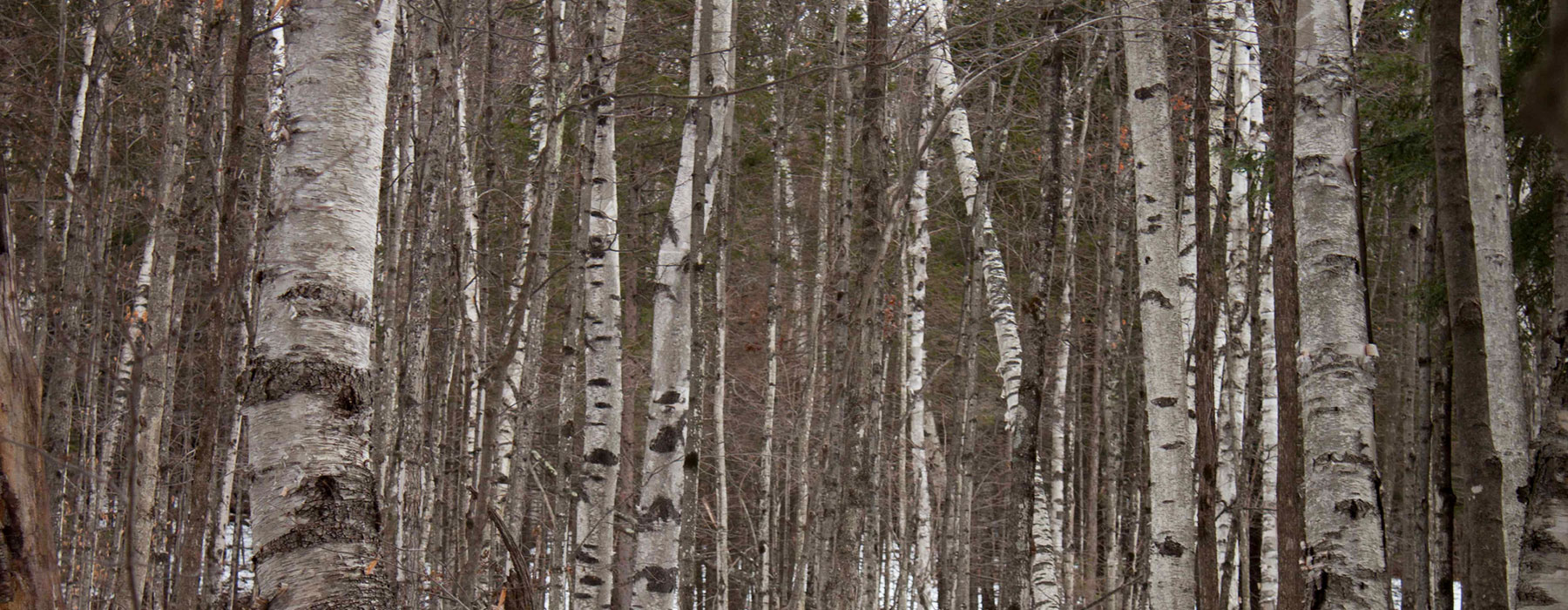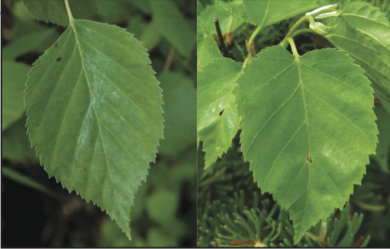Many people don't realize that two species of paper birch trees grow in northeastern North America - Paper or White Birch (Betula papyrifera) and Heart-leaved Paper Birch (B. cordifolia), once considered a variety of Paper Birch.
As its name suggests, the latter species has distinctive heart-shaped, many-veined leaves, and it is restricted to mid- to high-elevation Appalachian and northern forests.
The primary means of distinguishing Heart-leaved Paper Birch from Paper Birch include:
- The leaf base is heart-shaped (cordate)
- Its leaves are dotted with resin glands
- Young shoots are not hairy
- A bronze or pinkish inner bark shows when the outer bark peels
- It is genetically diploid (28 chromosomes), making it unlikely that these two species will readily hybridize
We know surprisingly little about the exact range of these two species. How low in elevation does Heart-leaved Paper Birch grow? How high does Paper Birch climb into the mountains? Do they overlap in some areas? And how will these species respond to climate change, or have they already? Observers adding records to iNaturalist Vermont, a project of the Vermont Atlas of Life, are helping to map these and many other species. We hope you will add your observations too.


